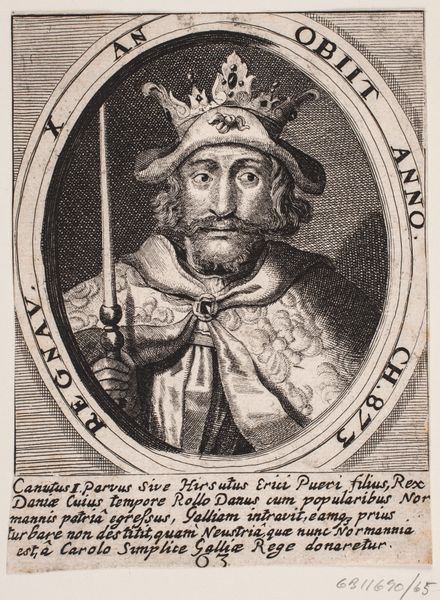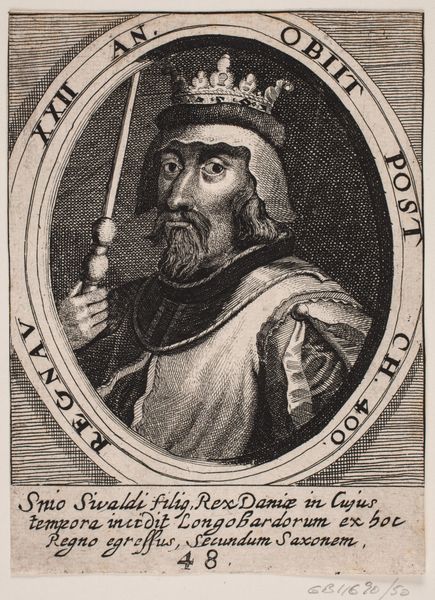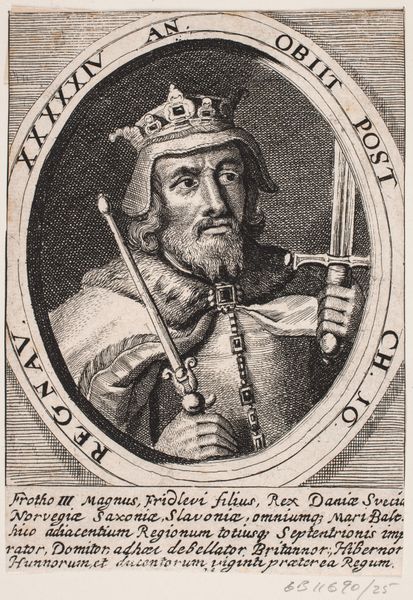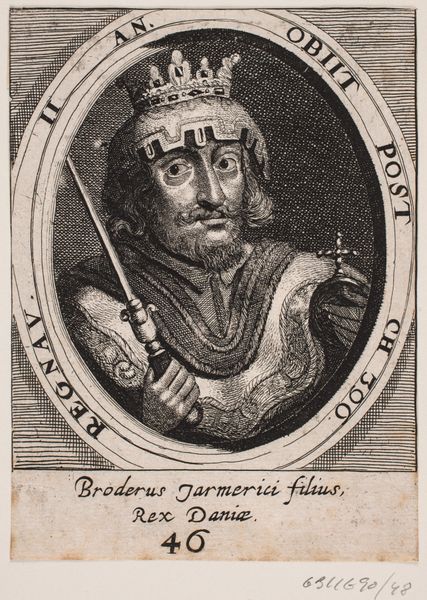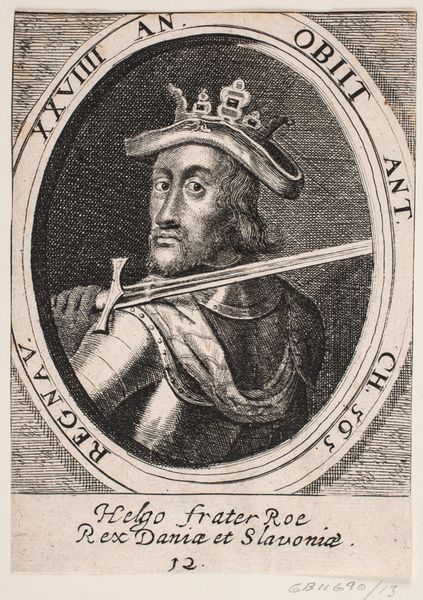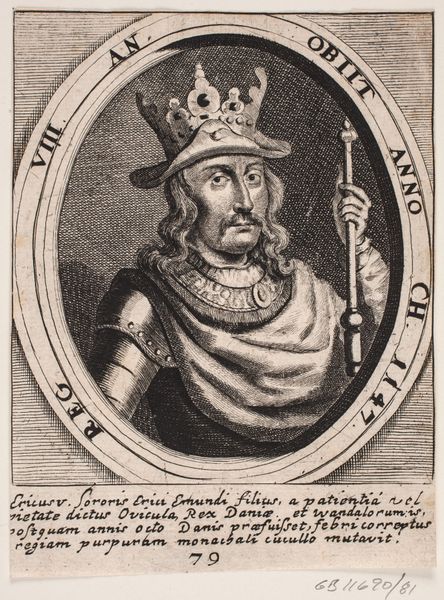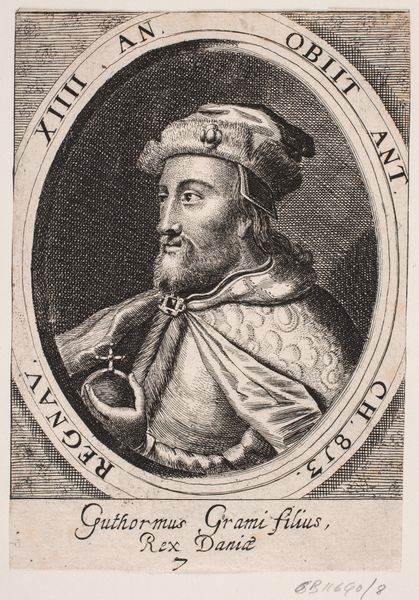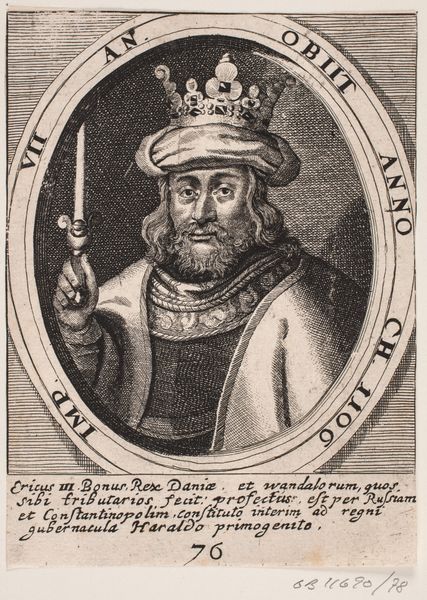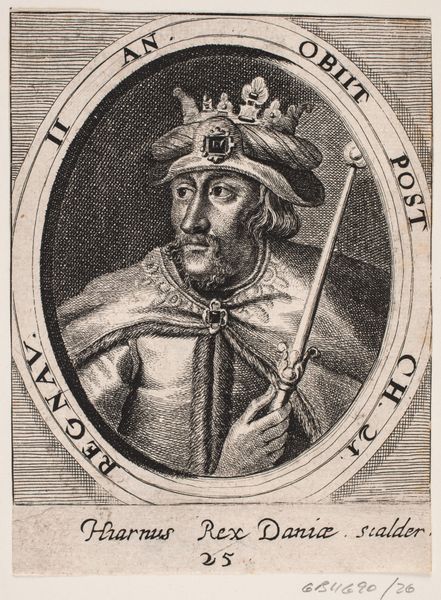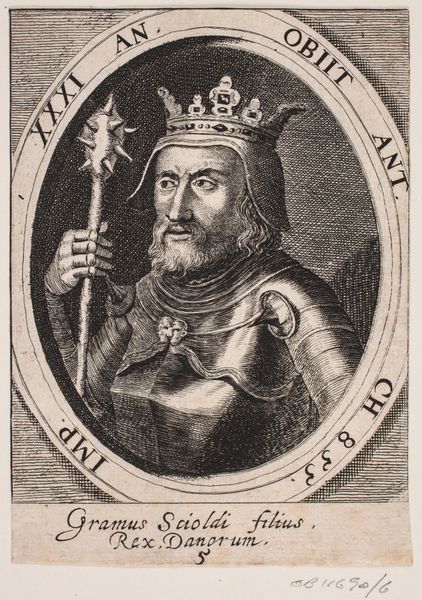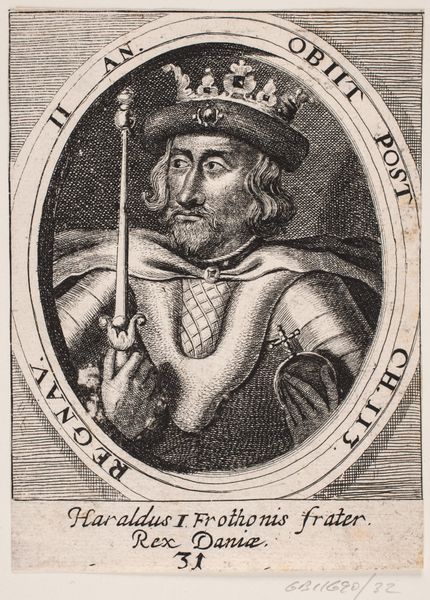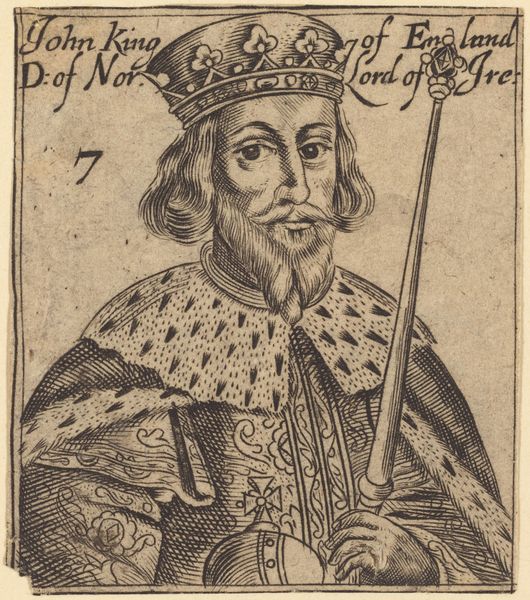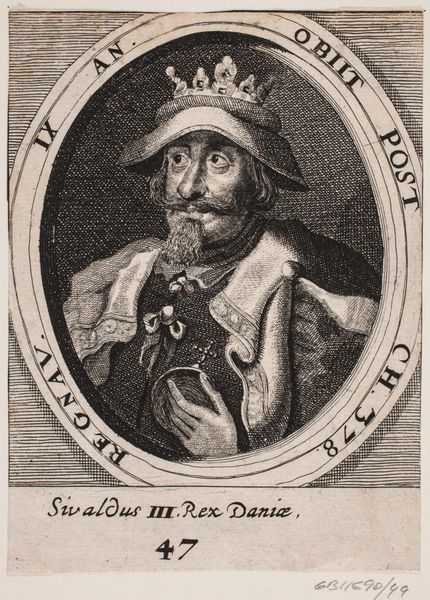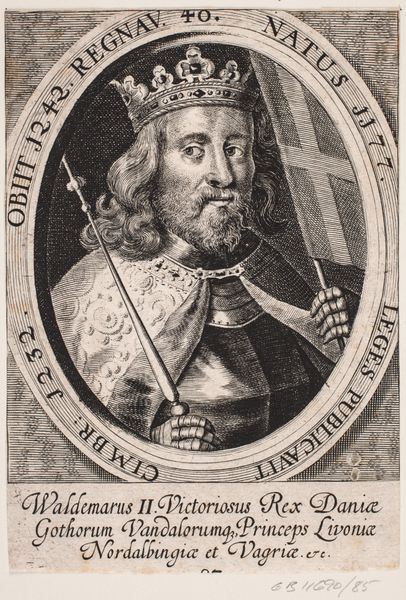
print, engraving
#
portrait
# print
#
history-painting
#
engraving
Dimensions: 140 mm (height) x 100 mm (width) (bladmaal)
Curator: Before us we have an engraving from 1646. Its title is "Kong Harald VI." Editor: It’s strikingly austere. The stark black lines create this really formidable image, almost as if the king is encased in iron despite being inside of the ornamental frame. It feels immediately like a representation of power, but also of a certain kind of cold isolation. Curator: Indeed. It’s interesting to note that this piece comes from a time when printed images were powerful tools of propaganda and were a relatively novel method for mass communication, so these formal qualities really play a role in disseminating power. The text inscription makes sure everyone knows exactly who we’re looking at here: Harald VI, King of Denmark, son of Sven Estridsen. Editor: The Latin inscription lends it an air of authority, too. What's really compelling is the contrast between the king's almost weary expression and the sheer density of detail in the armor and crown. It speaks to the burdens of leadership, but also the symbolic importance that’s bestowed upon figures like kings. How much is authentic to his person versus a performance? Curator: This image definitely functions within specific codes of representing royalty in the 17th century. His pose, the regalia he holds, are designed to convey power, authority, and legitimacy. The very fact it's a print suggests the desire for wider distribution, an appeal to cement his image within a broader consciousness. It's not just a portrait; it's a piece of political branding. Editor: It's interesting that we now analyze such a printed portrait of power. It's a powerful testament to the image-making apparatus and historical events. Curator: Very true, seeing this artwork with fresh eyes provides another outlook on political portraits in a historical moment, and reminds us how a face and specific details like the crown were presented for the eyes of the public, who would recognize such iconographic language and power status in its specific moment. Editor: Exactly. It allows us to recognize it today with some understanding.
Comments
No comments
Be the first to comment and join the conversation on the ultimate creative platform.
